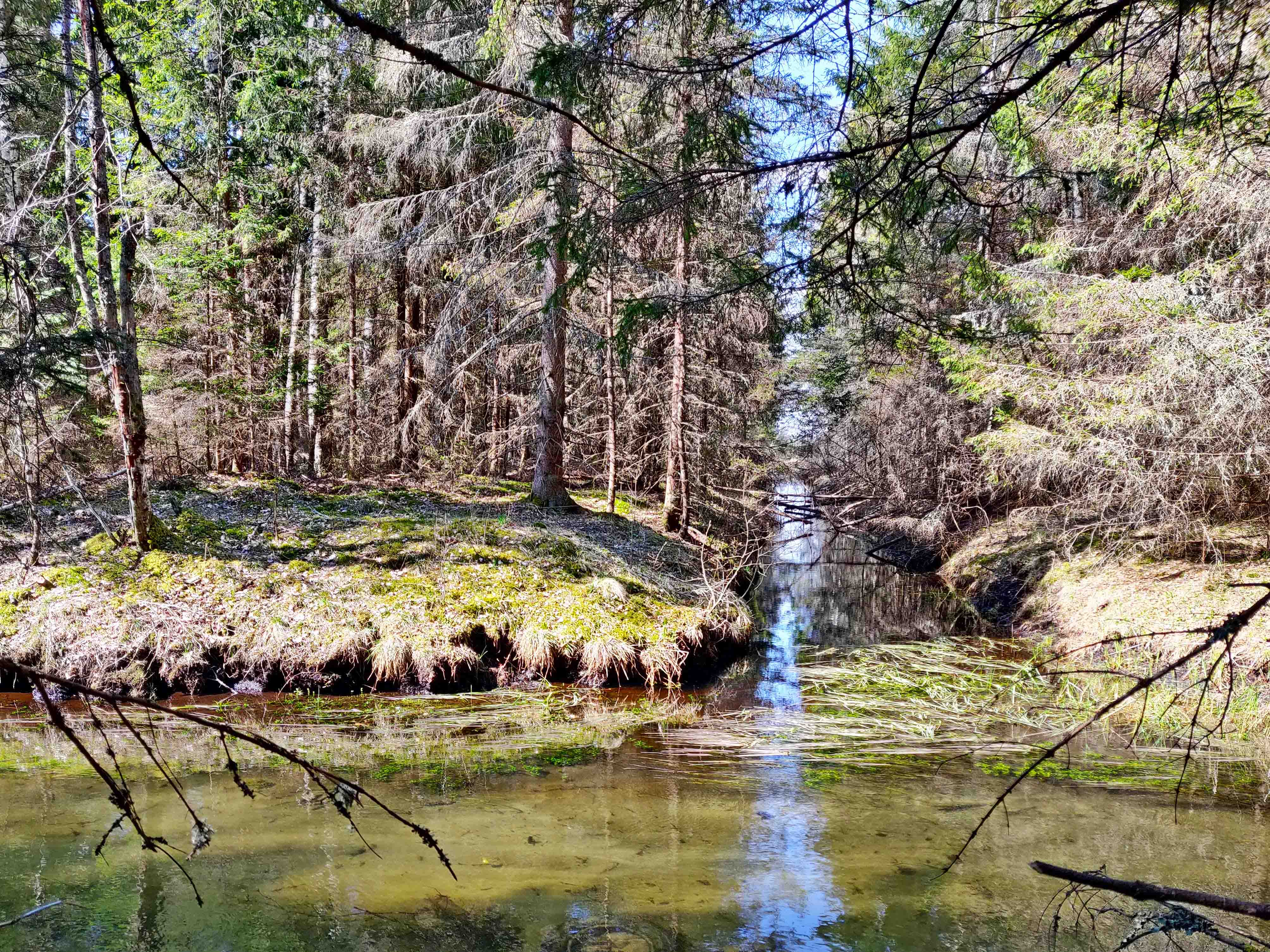By closing the drainage ditches of the mires, we can restore their natural water regime and the mire community will gradually recover
Where peat is deposited in natural mires, this process has been significantly slowed down or even stopped in drained mires. This leads to a change in the mire functioning as a carbon sink to functioning as a carbon emitter (atmospheric emitter) and negative effects on mire communities and species.

Centuries ago, some mire drainage was used mainly to obtain peat for burning and expand agricultural areas. Peat became more widely used in Estonia for heating since the eighteenth century [1] and until the middle of the nineteenth century, mires were drained and peat was cut by hand. Therefore, the volumes and areas at that time were not large. During the first Republic of Estonia, in 1918–1940, mires were drained to obtain agricultural areas. Before World War II, a total of more than 350,000 ha of mires were drained in the Republic of Estonia [2].
Due to the combined effect of heavy machinery introduced after World War II and the national agricultural policy, the drainage of mires expanded enormously. By the time Estonia regained independence at the end of the 1980s, 1,006,300 ha of mires had been drained in Estonia, including 584,400 ha for agricultural and 338,400 ha for forestry purposes [2]. Thus, by that time, land improvement had affected almost 70% of Estonia’s former mire areas to such an extent that peat deposition had stopped. So it was no longer possible to talk about living mires in these areas.
However, it is not too late to reverse this process. By closing the drainage ditches of the mires, we can restore their natural water regime and the mire community will gradually recover. Adequate water supply is needed for the resumption of paludification processes, in the presence of which the mire vegetation recovers and peat begins to form in the area again. Removing the stand in regenerating mires not only changes the light and nutrient regime, but also helps reduce excessive water evaporation through woody plants.
The beginning of the restoration of the Kuresoo bog in the Soomaa National Park in 2010 must be considered the starting point for the restoration of mires in Estonia. In 2012–2013, extensive restoration work was carried out there – in the minerotrophic and mixotrophic fens, the stand was removed and dams were built on drainage ditches to restore open field mire communities. Five years after the start of the restoration work, significant changes had already been noticed in the Kuresoo bog: the natural water regime had started to function and the overall state of the mire communities had become more characteristic of mire and bog areas [3].
The objectives of mire restoration are to [4]:
- halt the deterioration of the mire habitat types;
- restore the conditions for the restoration of the edge communities of destroyed mires as integral parts of the mire landscape;
- create conditions for the recovery of the habitats of endangered and rare species;
- stop the decomposition of peat and the emission of CO2 into the atmosphere;
- increase the water capacity of the landscape and ensure the quality and volume of regional water resources;
- reduce the fire risk of mire landscapes;
- increase the yield of mires (berries, mushrooms, etc.);
- increase the recreational value of the landscape.
The main techniques for restoring mire communities are raising the water level to a near-surface level by closing ditches and removing ditch embankments, and removing trees and shrubs.
In order to restore mire communities, it is necessary to know the processes taking place there and to conduct research. The restoration of mires must take into account that it also changes the water regime of the surrounding areas, and that forests of exceptional species conservation value, where there are protected category I species, endangered species, or species of European Union importance, should not be damaged by this.
The role of mires as a carbon sink
Natural mires play an important role as carbon sinks. Long-term monitoring of drained mires has shown that up to 15 tonnes of organic matter per hectare are destroyed each year as a result of mineralisation [5]. The total annual mass of mineralised peat is at least 4–5 times higher than the mass of peat added to natural mires during the same period. Up to 6 million tonnes of peat are mineralised in all drained peatlands in Estonia every year – the amount of decomposing peat is at least twice as large as the amount of peat mined during the year [6]. At least 5 million tonnes of CO2 are also emitted from drained mires every year [7]. Thus, drained fens and bogs are one of the main sources of greenhouse gases (mostly CO2) in Estonia. During the year, the amount of carbon emitted from peatlands in the composition of CO2 is about ten times higher than the amount of carbon sequestered during photosynthesis in natural mires at the same time [1].
Last modified: 09.11.2021
___________________________________________________________________________________
[1] J. Paal. Jääksood, nende kasutamine ja korrastamine. Tallinn, 2011.
[2] A. Ratt. Mõnda maaviljeluse arengust Eestis läbi aegade. Tallinn Valgus, 1985.
[3] L. Krumm. Olen soo! METSIKU EESTI LOOD: KesKus’i ja RMK lugudesari Eesti metsadest. http://kes-kus.ee/olen-soo/
[4] Kaitstavate soode tegevuskava. Eesti Looduse Fond, Keskkonnaministeerium, 2015.
[5] U. Tomberg. Turba vajumine soode kuivendamisel. Eesti Maaviljeluse ja Maaparanduse Teadusliku Uurimise Instituut, Saku, 1992.
[6] M. Ilomets. Turba juurdekasv Eesti soodes. Lõpp-aruanne. Keskkonnainvesteeringute Keskuse rakenduslikule uurimisprojektile. [Käsikiri, 2005].
[7] M. Ilomets. Temporal changes in Estonian peatlands and carbon balance. – In: J.-M. Punning (ed.). Estonia in the system of global climate change. Publications of Institute of Ecology 4/1996: 65-74.